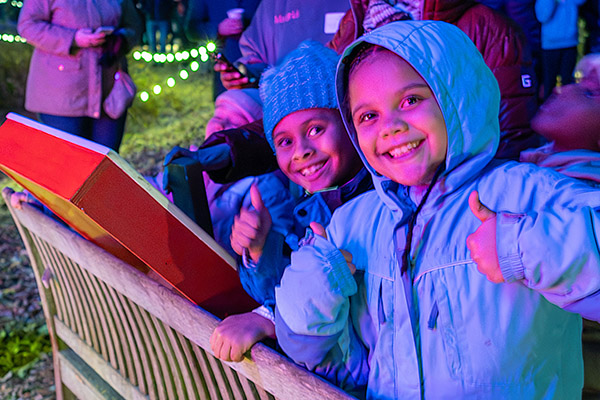When the snow falls every winter, it seems to envelope everything in whiteness. A fresh snowfall is elegant — transforming branches, trees and the ground that we stand on into a wonderland. But the snow’s ability to shed new light on nature’s already present beauty only lasts so long, for every time we travel outdoors, we still yearn to see life. Though it may be difficult to find at times, there are still signs of life in and around the mounds of winter snow.
Here are some things you can be on the lookout for this winter during a stroll through the Garden:
BIRDS
Some of the birds that visitors see in the Garden include cardinals, chickadees, woodpeckers and turkeys. If the weather is mild, robins can be seen as early as January, and one was spotted already at the Garden! However, most robins aren’t typically flying around from tree to tree until March.
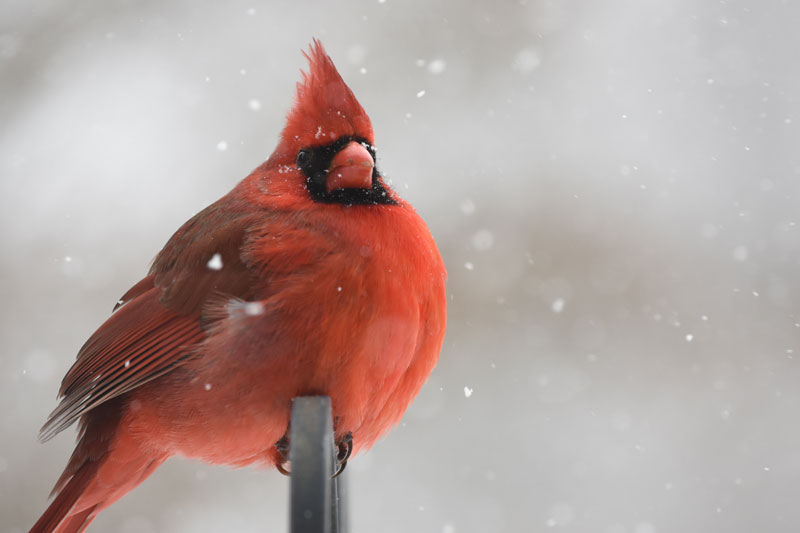

The birds that stay are able to find food, such as insects or seeds left on plants. To stay warm during the cold winter months, birds will fluff up their feathers. Doing this allows their feathers to hold air and retain body heat, which is similar to a human putting on an extra sweater underneath their jacket.
ANIMAL TRACKS
Deer sometimes manage to sneak past the Garden’s fence, leaving their tracks as ones to follow along the winter trails. Foxes, squirrels, rabbits, mice and turkeys also create imprints in the snow. Mice make tunnels in the snow as well because it keeps them warm and protects them from their typical predators like hawks, owls and foxes. Chewed branches are also signs that rabbits are nearby because they eat the bark off of trees throughout the winter season.
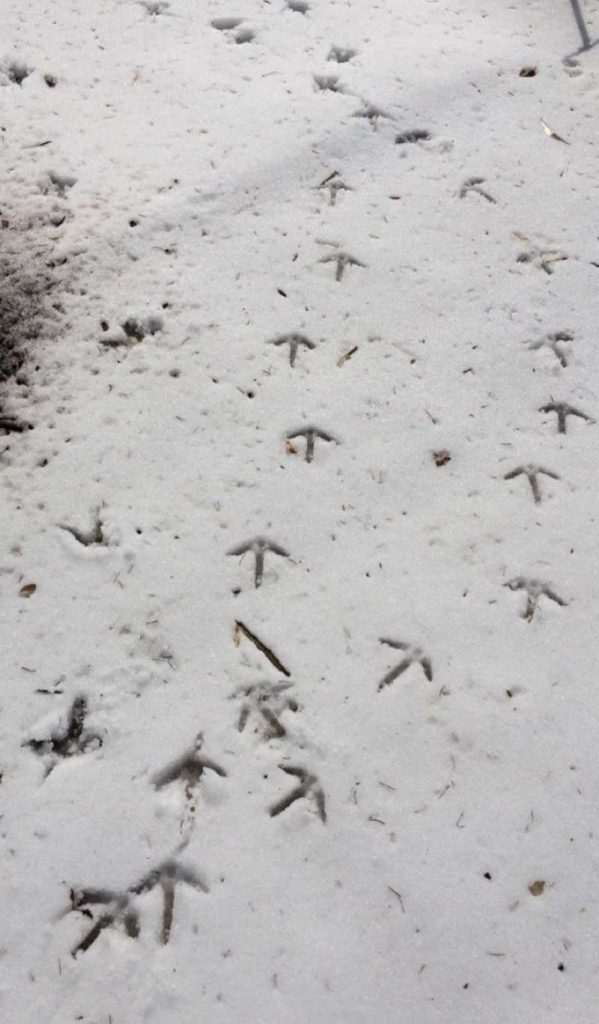

TREE BARK
In spring and summer, tree bark often gets lost in the background behind blooming flowers and sprouting leaves. However, in the winter, tree bark has a time to shine. The bark of red twig dogwood, yellow twig dogwood, birch and musclewood trees are interesting ones to look out for on a winter hike through the Garden.
PLANTS
Evergreens have small and thick needles that keep them protected against the cold and dryness of winter time. We recommend exploring the conifers in our Arendt Conifer Garden or the weeping yellow cypress tree by the Schierl Wellhouse. Here you’ll see different forms of the trees and the shape and texture of their needles, too.
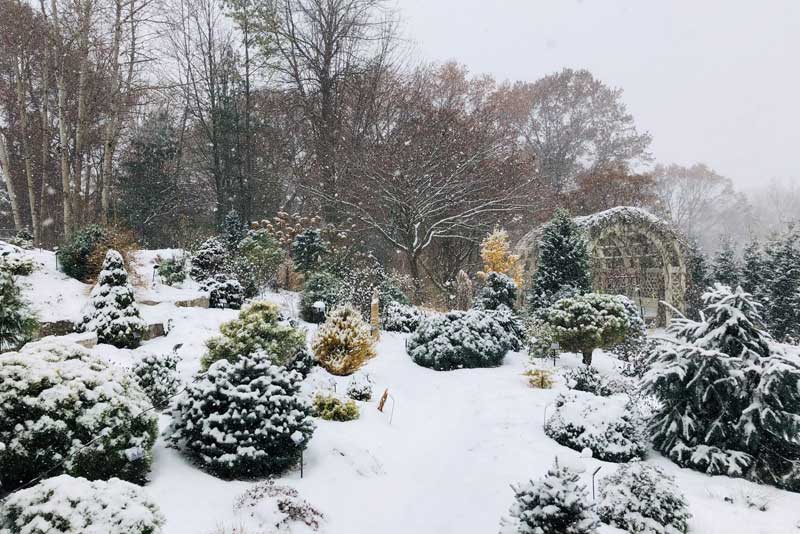

The roots of perennial plants are also alive underneath the ground during the winter. The Schneider Family Grand Garden is a good spot to check out. Grasses like prairie dropseed and little bluestem or flowers like yarrow or anise hyssop are just a few examples of what you’ll see. In the spring, these plants will grow new leaves from their roots.
INSECTS
Insect galls are plant structures made of plant tissue that insects form, and they can be found in goldenrod and willow (as well as many other plants!) during the winter. A small fly called a gall gnat midge makes the willow pine cone gall and the goldenrod gall fly creates galls you can find on goldenrod plants in the Grand Garden. Insects are in the larval or pupal stage when they are in these galls, so they come out as adults in the spring.
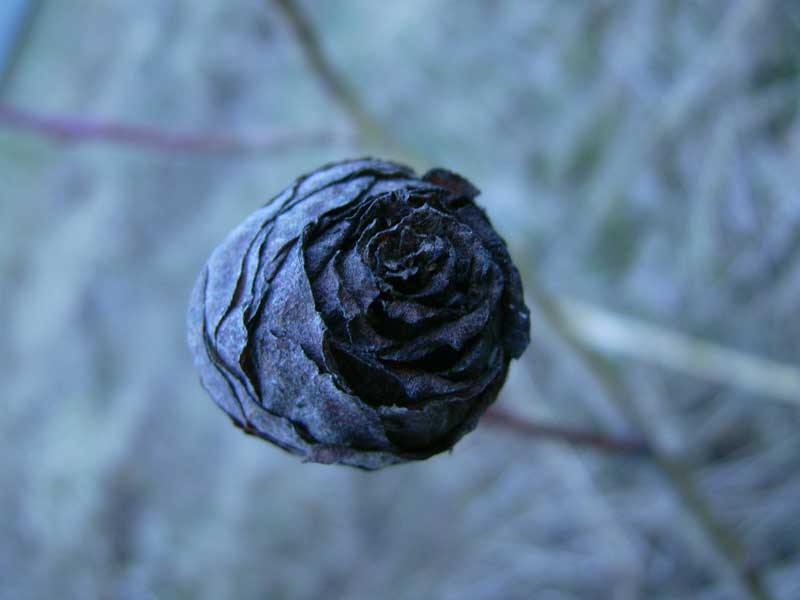

PC: Fungus Guy
Although the Garden is not yet filled with spring and summer blooms, you won’t want to miss a walk through this snow-filled landscape during the winter! The life that you still yearn to see is in the Garden’s snow, trees and animals. You just have to look for it. Check out our website to see when we’re open!
Sources
- Discoverwildlife.com
- Friends of the Wildflower Garden
- Wisconsin Master Gardener Association
- Green Bay Botanical Garden Winter Ecology Handout
This post was originally published in 2020.







